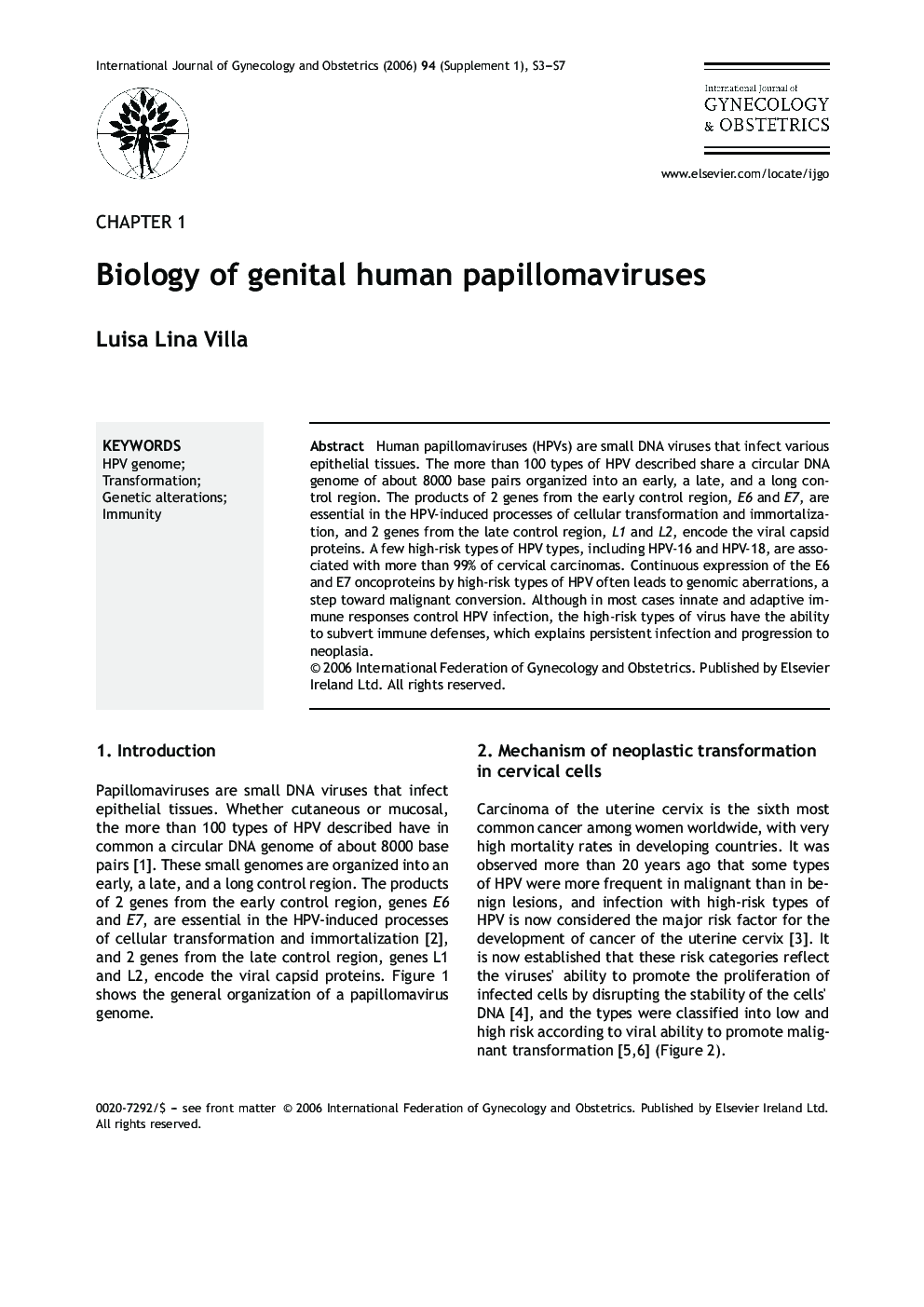| کد مقاله | کد نشریه | سال انتشار | مقاله انگلیسی | نسخه تمام متن |
|---|---|---|---|---|
| 3955573 | 1600441 | 2006 | 5 صفحه PDF | دانلود رایگان |

Human papillomaviruses (HPVs) are small DNA viruses that infect various epithelial tissues. The more than 100 types of HPV described share a circular DNA genome of about 8000 base pairs organized into an early, a late, and a long control region. The products of 2 genes from the early control region, E6 and E7, are essential in the HPV-induced processes of cellular transformation and immortalization, and 2 genes from the late control region, L1 and L2, encode the viral capsid proteins. A few high-risk types of HPV types, including HPV-16 and HPV-18, are asso-ciated with more than 99% of cervical carcinomas. Continuous expression of the E6 and E7 oncoproteins by high-risk types of HPV often leads to genomic aberrations, a step toward malignant conversion. Although in most cases innate and adaptive im-mune responses control HPV infection, the high-risk types of virus have the ability to subvert immune defenses, which explains persistent infection and progression to neoplasia.
Journal: International Journal of Gynecology & Obstetrics - Volume 94, Supplement 1, November 2006, Pages S3-S7